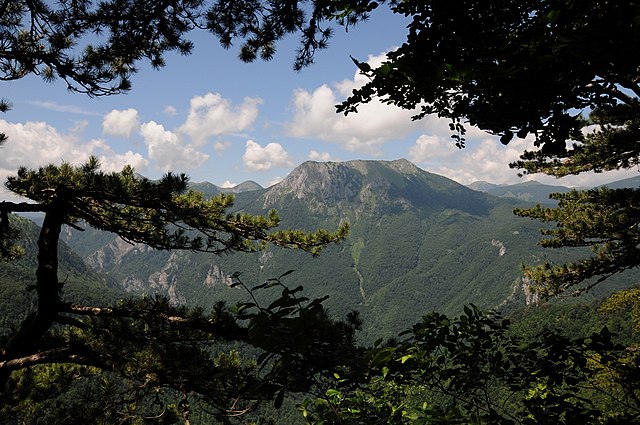The Congress of Berlin was a diplomatic conference to reorganise the states in the Balkan Peninsula after the Russo-Turkish War (1877–1878), which had been won by Russia against the Ottoman Empire. Represented at the meeting were Europe's then six great powers: Russia, Great Britain, France, Austria-Hungary, Italy, and Germany; the Ottomans; and four Balkan states: Greece, Serbia, Romania and Montenegro. The congress concluded with the signing of the Treaty of Berlin, replacing the preliminary Treaty of San Stefano which had been signed three months earlier.
Anton von Werner's painting, Congress of Berlin (1881), depicting the final meeting at the Reich Chancellery on 13 July 1878. Bismarck (representing Germany) is shown in the centre, between Gyula Andrássy (Austria-Hungary) and Pyotr Shuvalov (Russia). On the left are Alajos Károlyi (Austria-Hungary), Alexander Gorchakov (Russia) (seated) and Benjamin Disraeli (Great Britain).
Bismarck manipulates the emperors of Austria, Germany & Russia like a ventriloquist's puppets.
Allegorical depiction of Bulgarian autonomy after the Treaty of Berlin. Lithograph by Nikolai Pavlovich
Greek Delegation in the Berlin Congress
The Balkans, corresponding partially with the Balkan Peninsula, is a geographical area in southeastern Europe with various geographical and historical definitions. The region takes its name from the Balkan Mountains that stretch throughout the whole of Bulgaria. The Balkan Peninsula is bordered by the Adriatic Sea in the northwest, the Ionian Sea in the southwest, the Aegean Sea in the south, the Turkish straits in the east, and the Black Sea in the northeast. The northern border of the peninsula is variously defined. The highest point of the Balkans is Musala, 2,925 metres (9,596 ft), in the Rila mountain range, Bulgaria.
A definition of the Balkan Peninsula from 1918 largely according to Jovan Cvijić with the north-west demarcation Soča-Vipava-Postojna-Krka-Sava, i.e. the border between the Alps and the Dinaric Mountains
View toward Rila, the highest mountain range of the Balkans and Southeast Europe (2,925 m)
Sutjeska National Park contains Perućica, which is the largest primeval forest in the Balkans, and one of the last remaining in Europe
Lake Skadar is the largest lake in the Balkans and Southern Europe








